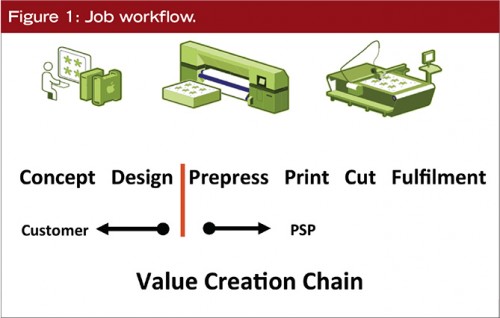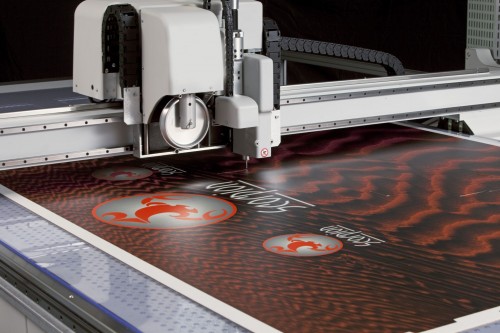By Steve Bennett
The technological landscape for the printing industry has changed dramatically over the past decade. Today, 98 per cent of all print service providers (PSPs) are using digital presses of some type. For 72 per cent, their production environments are already mostly or all digital. This has changed the nature of competition.
Rather than simply offering the same commoditized products, it is important for sign shops to add value for their customers, both before and after printing. Some 65 per cent of PSPs say it is important to offer short runs, for example, while 59 per cent say added value comes with shortened delivery times.
The spectrum of this ‘value creation chain’ for a complete job encompasses both customer-centric and PSP-centric elements (see Figure 1). The customer is generally concerned with a marketing concept and the design of the printed material, while the PSP is looking to add value in pre-press, printing, cutting, finishing, fulfilment and delivery.
One of the most frustrating issues for today’s wide-format graphics PSPs in this respect is how to find and resolve production bottlenecks, where output is being slowed down by specific processes, particularly during the finishing stages.
 Cutting options
Cutting options
The cutting phase is typically where these bottlenecks begin. There are several methods for finishing a print job at this point.
One is cutting by hand. This is the slowest means to complete a job and, due to labour costs, often the most expensive option. With a lack of automation and consistency, manual cutting can also result in the lowest product quality.
Subcontracting is another option. It eliminates many of these problems, but can lead to some jobs taking longer than expected to complete, depending on the supplier’s priorities. The quality is usually satisfactory, but there is also less control of the work and less opportunity for profit.
A third option is to automate finishing with digital systems. This will mean high initial expenses, but most PSPs who bring digital finishing in-house report a very quick return on investment (ROI). The quality is better and more consistent than with manual cutting and, because the machines can run 24-7, bottlenecks are usually eliminated. These are all significant benefits, especially for short-run jobs.






